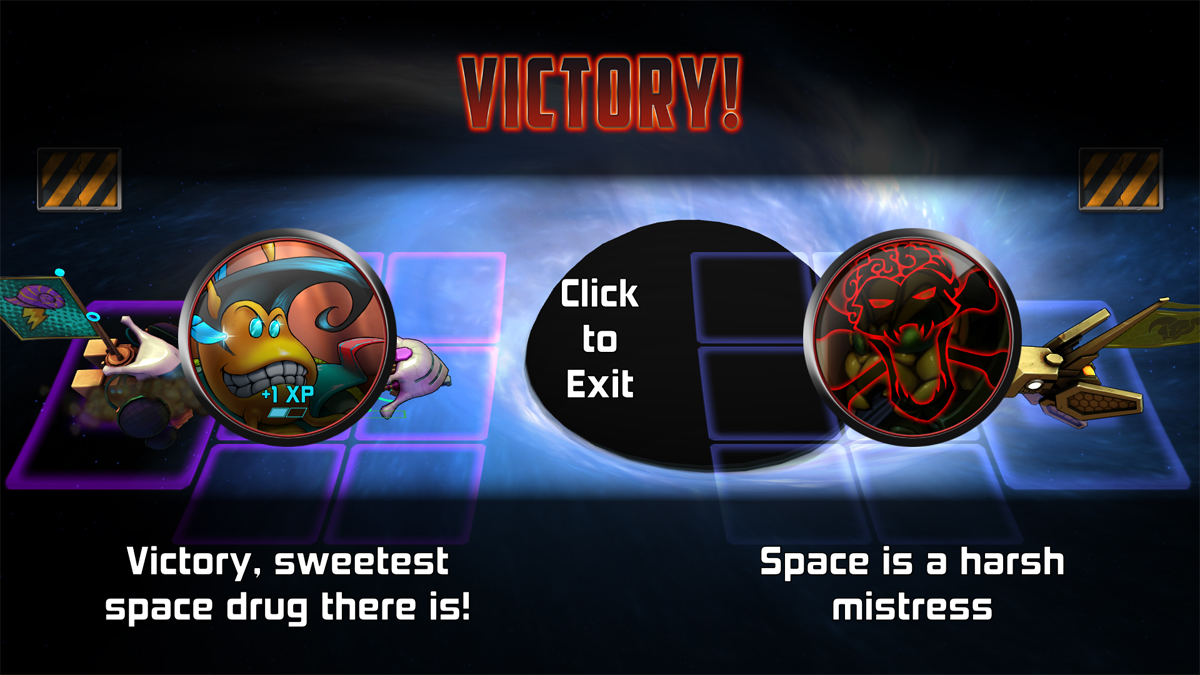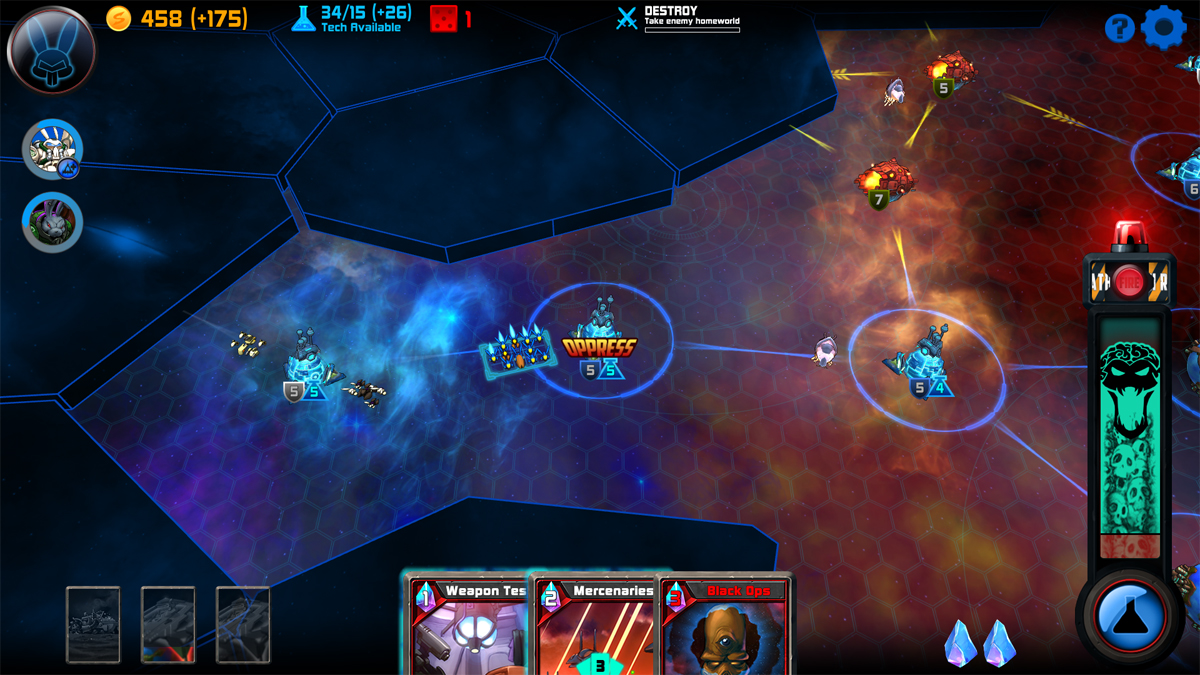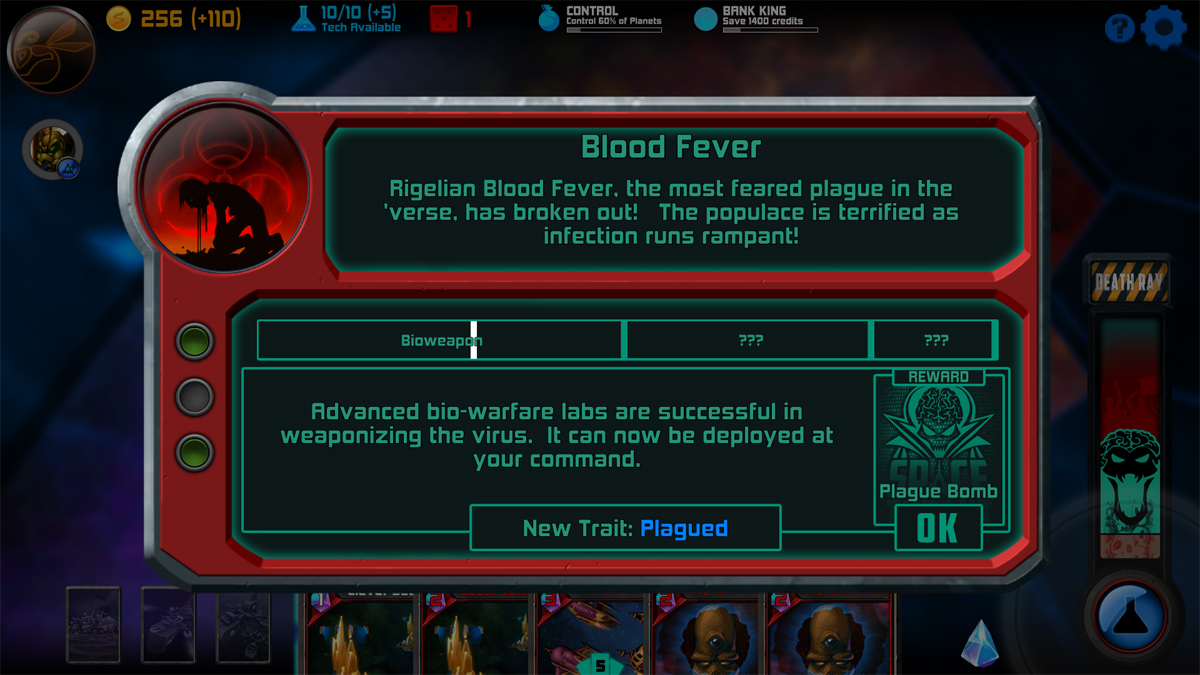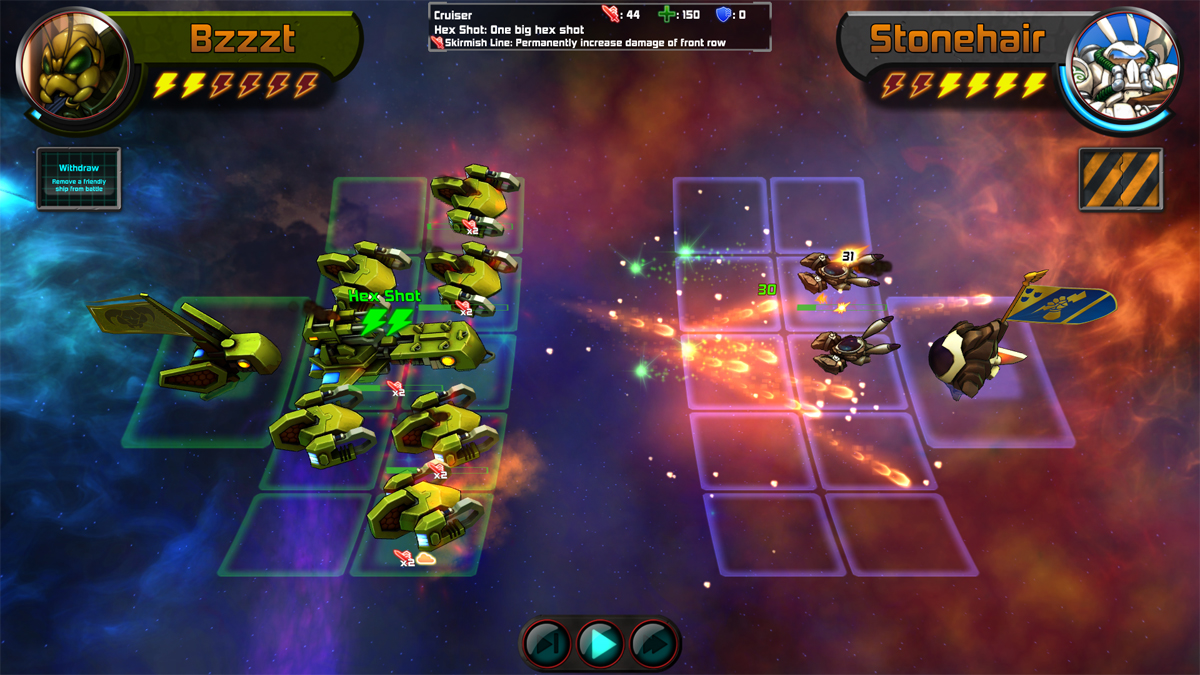Space Tyrant review
Crush your enemies and conquer the galaxy!

In gaming circles, Space Tyrant has garnered praise for being an accessible 4X game which distills down the basic mechanics of empire-building games. 4X, which is an acronym for “explore, expand, exploit, exterminate”, is a typically complicated genre of games where you have to manage many different resources, build an army, and conquer other civilisations. While other gamers call Space Tyrant 4X, I’m more inclined to call it a board game because that more succinctly describes what Space Tyrant is, for me at least.
Of course, Space Tyrant doesn’t actually take place on a board with other players, but it uses familiar mechanics. For instance, you have to roll a die to capture planets and you watch your opponent – the Galactic Senate – move after the end of each of your turns. The gameplay is so similar to the board game Risk that I’ve taken to nicknaming it Space Risk.

There are three playable races in Space Tyrant: The battle-hardened Hoplite Clans, the amazingly-named Techno Slug Party, and the insectoid Bzzerk Union. Each of the three races have their own music and visual style. For instance, the Hoplite Clans’ ships are welded out of rocks, while the Techno Slugs’ ships look sleek and technologically advanced.
The overworld music is also different for each race. For instance, the Techno Slugs have an upbeat techno soundtrack while the Bzzerk Union has more of a war march. The soundtrack in battles is a fast-paced techno soundtrack, and you’ll be listening to it a lot. Fortunately it’s both fun and easy on the ears, which is good considering I usually hate techno music. Each race also has three fleet commanders that you’ll also be looking at a lot. There’s no real character development, so they’re mostly just portraits. At least they look the part as evil villains, kind of.

The gameplay is simple. In each map, you start with one planet, which is your homeworld, and one starting fleet. You have to use your fleets to take over nearby planets, which are usually guarded by neutrals or by the Senate. The more planets you own, the more credits, crystals, and research points you get each turn. To win each map you’re given an objective, which can be controlling 60% of the planets, playing a certain number of cards, researching a certain number of upgrades, or playing five cards in one turn.
You also have to deal with unrest, proving that your own citizens are as much a barrier to your success as your enemies are. The skull meter to the right is your tyranny, and it’s drained each turn by the amount of unrest you have. If you run out of tyranny, you lose! Some missions have mechanics that increase your unrest, so it’s important to manage your unrest or win the mission before you inevitably fail.

The campaign has thirteen missions, each randomly generated. The main goal is to take over the Galactic Senate, which can only be done by completing a difficult mission that unlocks after you complete eight other missions. Completing missions also unlocks perks, which are passive bonuses like economic or combat bonuses. Naturally, the more perks you have, the easier it is to complete missions and take over the Senate.
Campaign missions are non-repeatable, but they offer rewards like cards which are permanent and can be used in future campaigns. If you want to collect all the cards you’ll have to play the campaign many times. In addition, each of the three races play differently, so replaying the campaign feels a lot different when trying out a new race.
Losing around twice makes you lose the campaign, so you will have to play it from the beginning if you lose. However, you can keep many of the rewards from the missions that you won, so it doesn’t feel completely punishing.

Trying to take over the galaxy for the first time is super addictive. There is definitely a learning curve, and I was only able to eventually succeed by making the best out of my present circumstances in each mission. Unfortunately, quite a bit is left to luck such as the map layout or disasters. Sometimes, there’s not a lot you can do if things don’t go your way.
For instance, the map design is random. You can get unlucky if there isn’t a prison planet nearby your homeworld, making it so you don’t have access to another fleet. Sometimes you’ll have no income because there are no cities nearby. Sometimes there will be no labs, making you lag behind in research.
The randomly generated disasters can be even worse. Disasters like sleeper cells, space monster invasions, or saboteurs can come out of nowhere as early as turn 4 with no opportunity to prevent them. From my experience the missions are still winnable even after you fail to deal with it, but prepare for matters to become much harder.
I don’t want to make it seem like luck is all that matters, because there are also a lot of important decisions that can win or lose a game. For instance, what planets do you prioritise taking? Do you keep on capturing planets at the risk of becoming too out of position? How should you deal with an incoming invasion?

The combat system is basically point-and-click, but with a host of fun powers like healing your ships, hurling meteors, and throwing up shields. Your primary resource is energy, which is represented by the lightning bolts at the top of the combat screen. Energy replenishes over time, and can be used to activate your commander’s power or your ships’ abilities. You also have one tactic in each battle, a one-time-use ability that is chosen randomly at the start of each fight.
The combat is so simple because Space Tyrant is a strategy game, not a space fighting game. My only complaint is that the battles are longer than they should be. Space Tyrant is a long game in general, and the battles aren’t exciting enough for how long they take.
Space Tyrant is a strategic, visually impressive board-game-in-space which effectively makes use of elements like random map design and permadeath. The game is very long, taking me thirty hours to complete the campaign. I was ecstatic! I finally managed to take the Senate! However, I can imagine how a casual player could become frustrated after losing their hard-earned progress to just one or two losses. If you’re a fan of strategy games, especially long games with high stakes, then you shouldn’t miss out on Space Tyrant.

